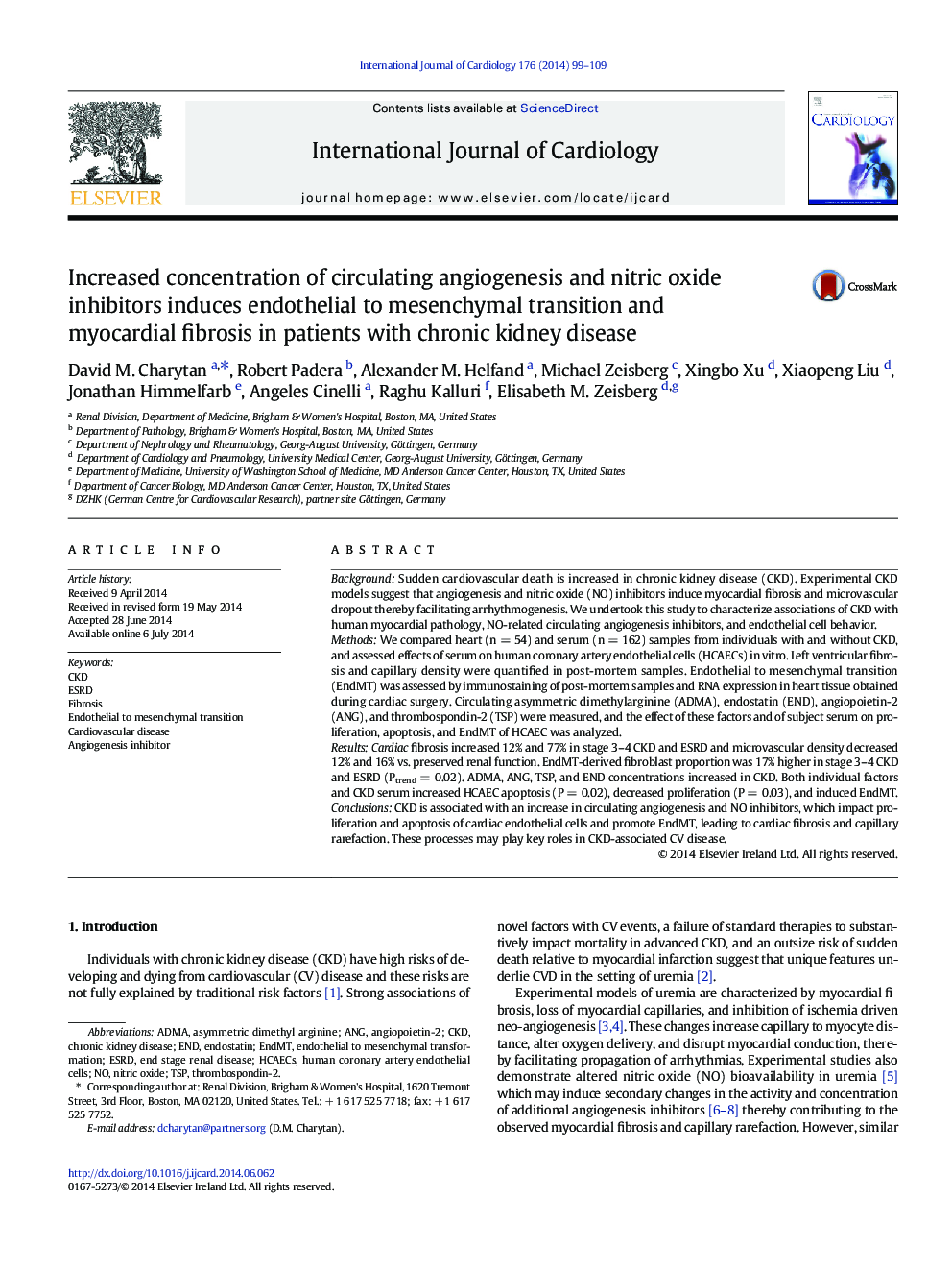| Article ID | Journal | Published Year | Pages | File Type |
|---|---|---|---|---|
| 5970655 | International Journal of Cardiology | 2014 | 11 Pages |
â¢Cell culture, human heart, and blood were studied to assess links of CKD and CVD.â¢Myocardial fibrosis increases and capillary supply are decreased in CKD.â¢Endothelial to mesenchymal transition (EndMT) is increased in CKD.â¢Circulating inhibitors of angiogenesis are increased in CKD.â¢EndMT and angiogenesis inhibitors may cause fibrosis and capillary loss in CKD.
BackgroundSudden cardiovascular death is increased in chronic kidney disease (CKD). Experimental CKD models suggest that angiogenesis and nitric oxide (NO) inhibitors induce myocardial fibrosis and microvascular dropout thereby facilitating arrhythmogenesis. We undertook this study to characterize associations of CKD with human myocardial pathology, NO-related circulating angiogenesis inhibitors, and endothelial cell behavior.MethodsWe compared heart (n = 54) and serum (n = 162) samples from individuals with and without CKD, and assessed effects of serum on human coronary artery endothelial cells (HCAECs) in vitro. Left ventricular fibrosis and capillary density were quantified in post-mortem samples. Endothelial to mesenchymal transition (EndMT) was assessed by immunostaining of post-mortem samples and RNA expression in heart tissue obtained during cardiac surgery. Circulating asymmetric dimethylarginine (ADMA), endostatin (END), angiopoietin-2 (ANG), and thrombospondin-2 (TSP) were measured, and the effect of these factors and of subject serum on proliferation, apoptosis, and EndMT of HCAEC was analyzed.ResultsCardiac fibrosis increased 12% and 77% in stage 3-4 CKD and ESRD and microvascular density decreased 12% and 16% vs. preserved renal function. EndMT-derived fibroblast proportion was 17% higher in stage 3-4 CKD and ESRD (Ptrend = 0.02). ADMA, ANG, TSP, and END concentrations increased in CKD. Both individual factors and CKD serum increased HCAEC apoptosis (P = 0.02), decreased proliferation (P = 0.03), and induced EndMT.ConclusionsCKD is associated with an increase in circulating angiogenesis and NO inhibitors, which impact proliferation and apoptosis of cardiac endothelial cells and promote EndMT, leading to cardiac fibrosis and capillary rarefaction. These processes may play key roles in CKD-associated CV disease.
